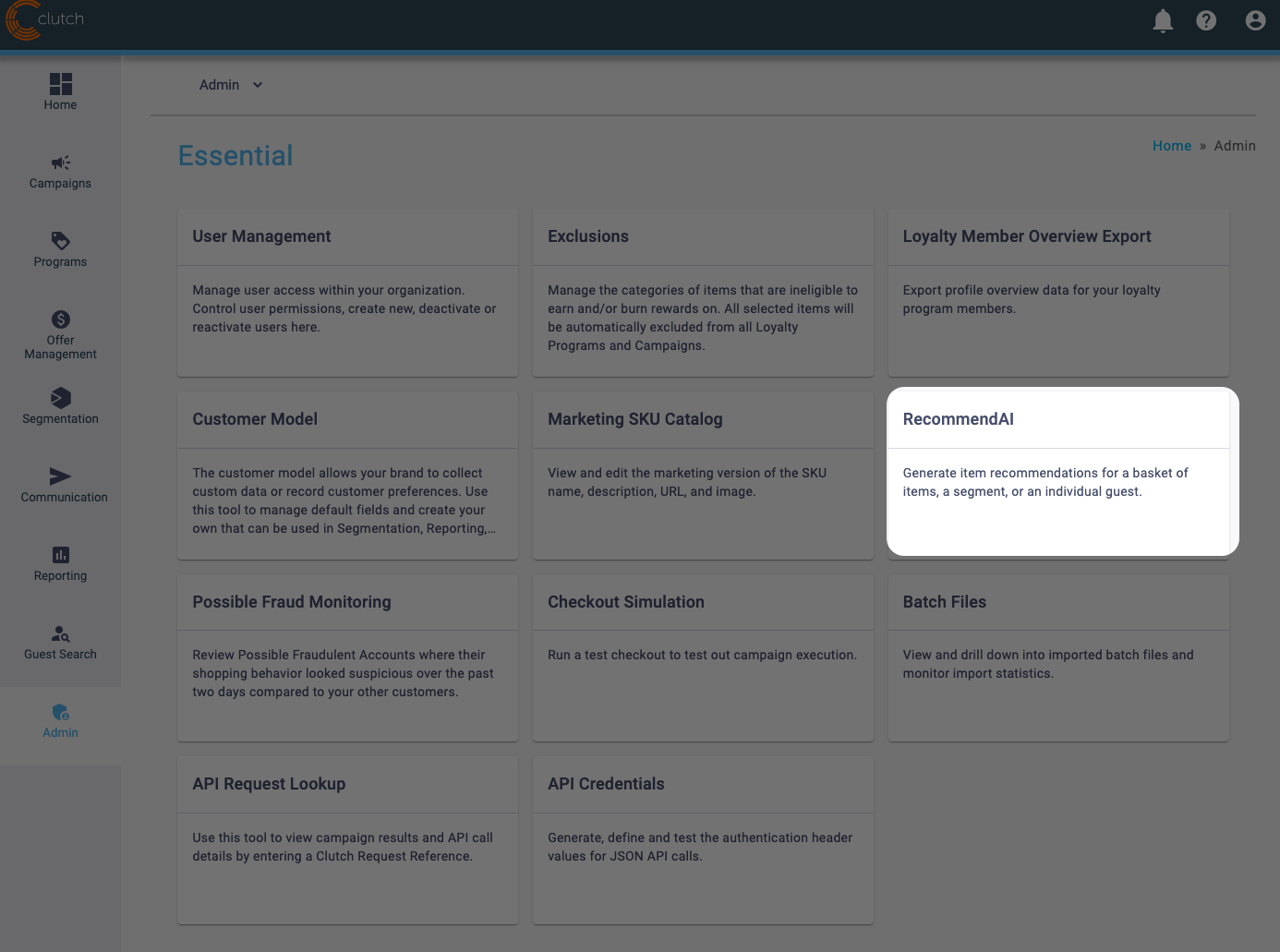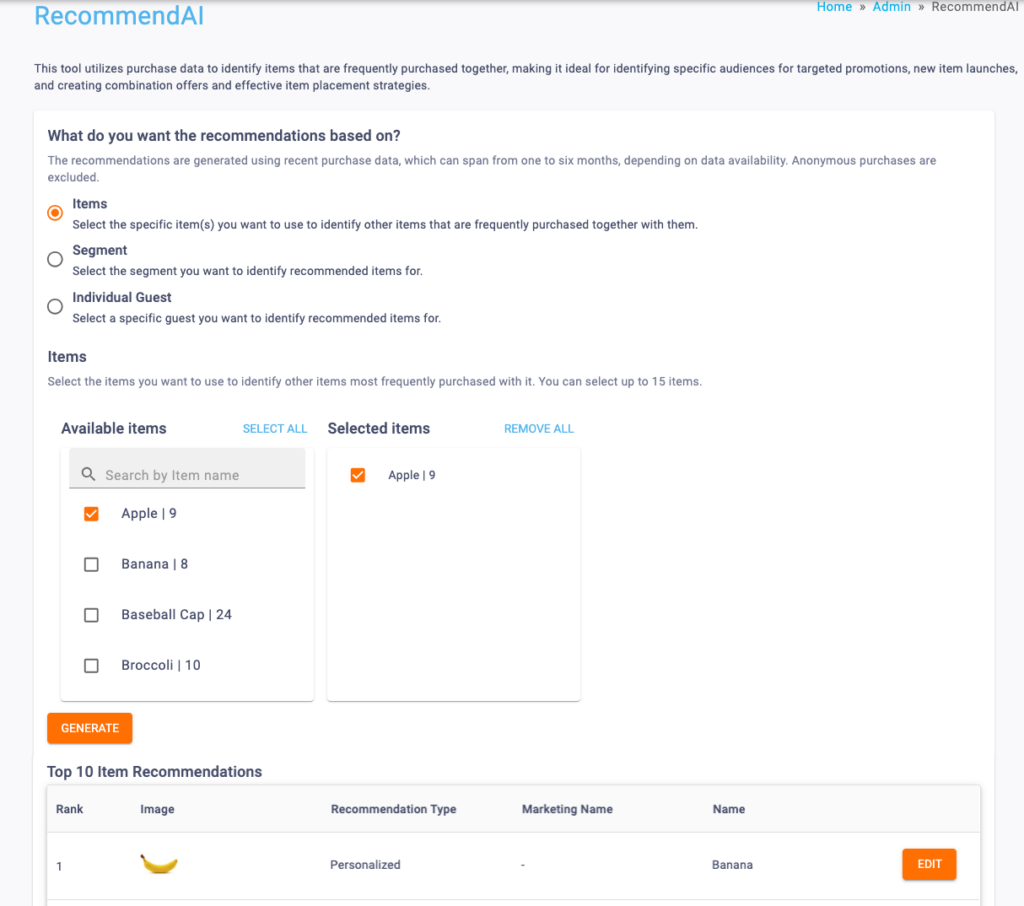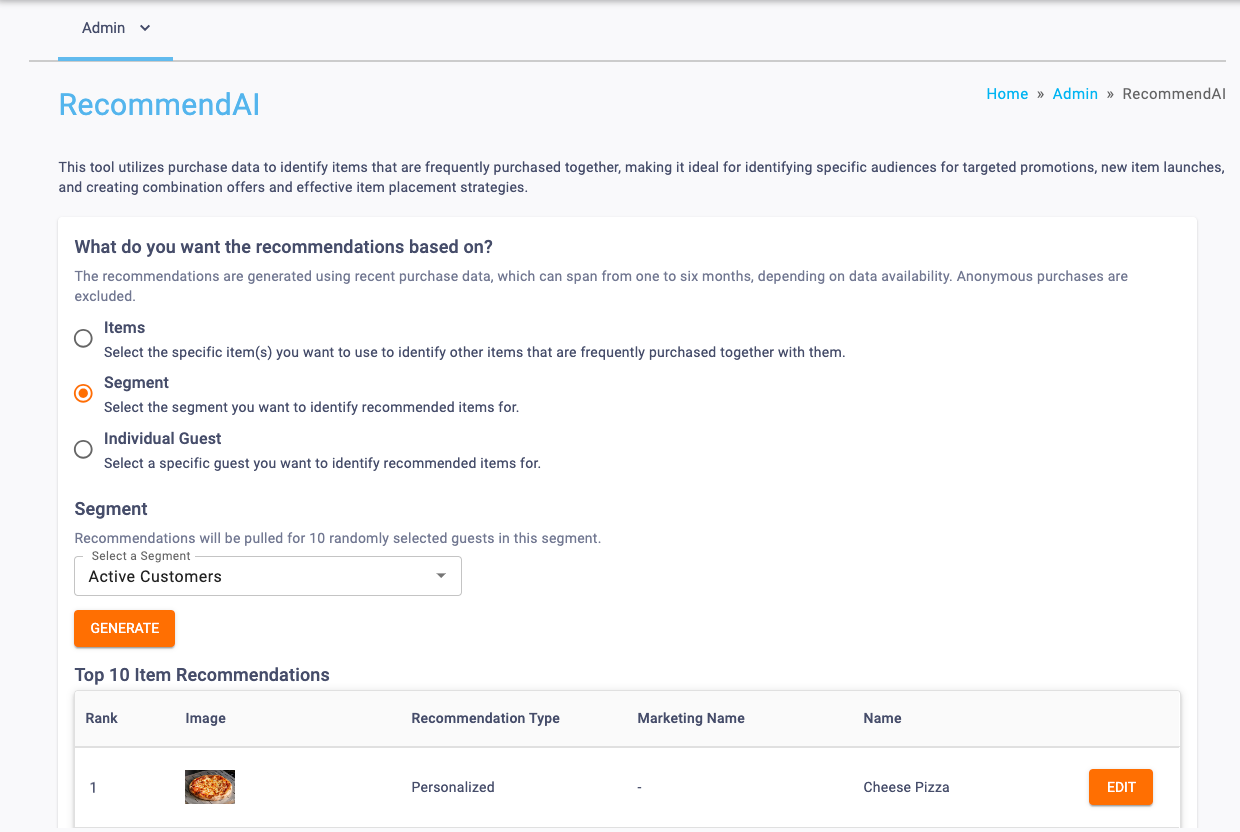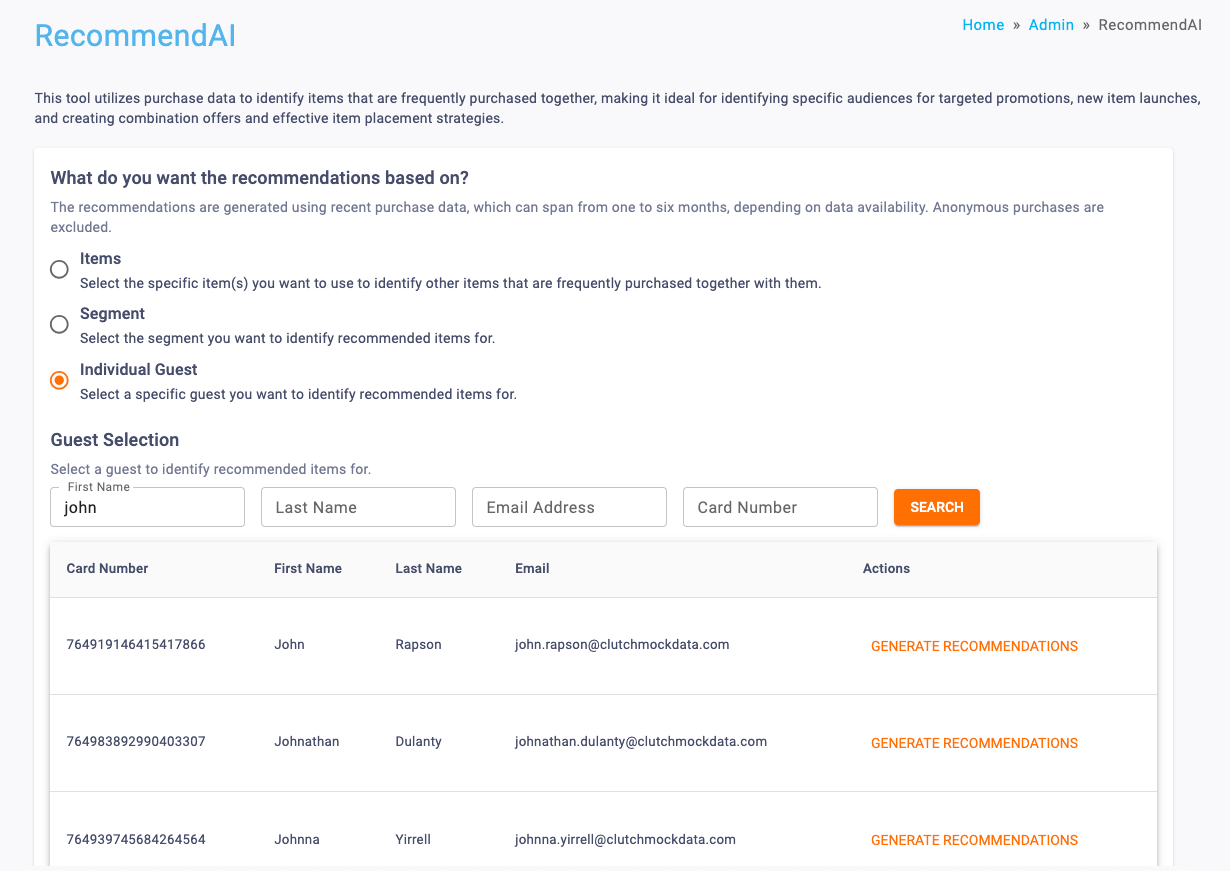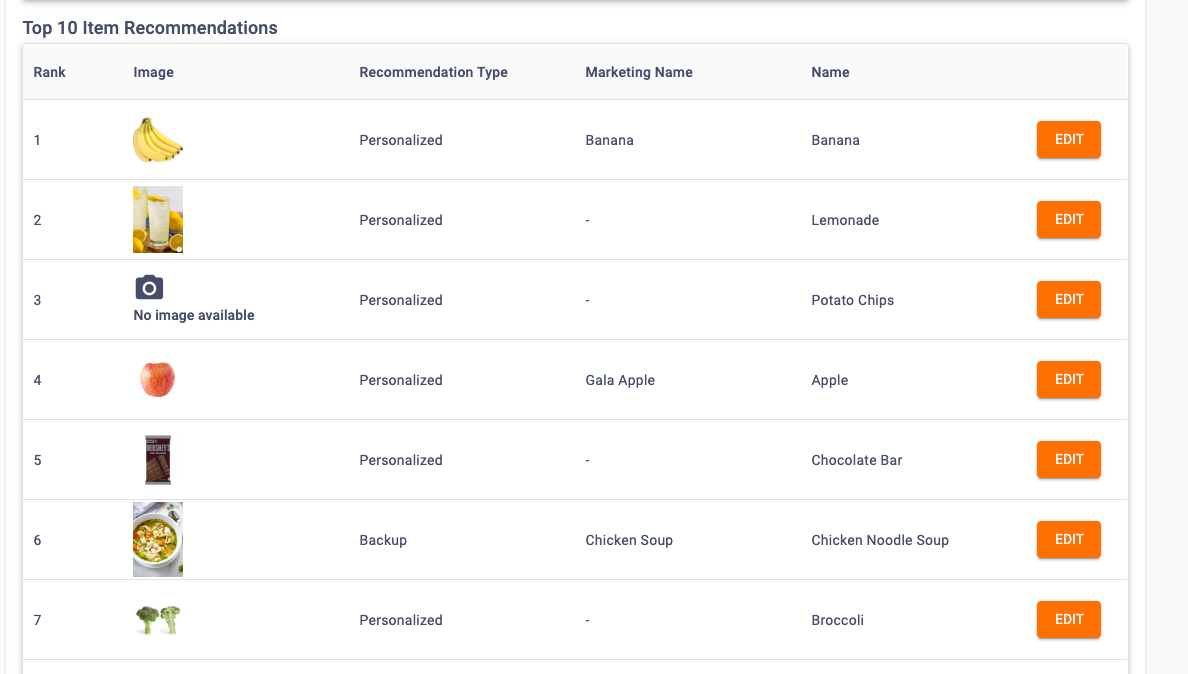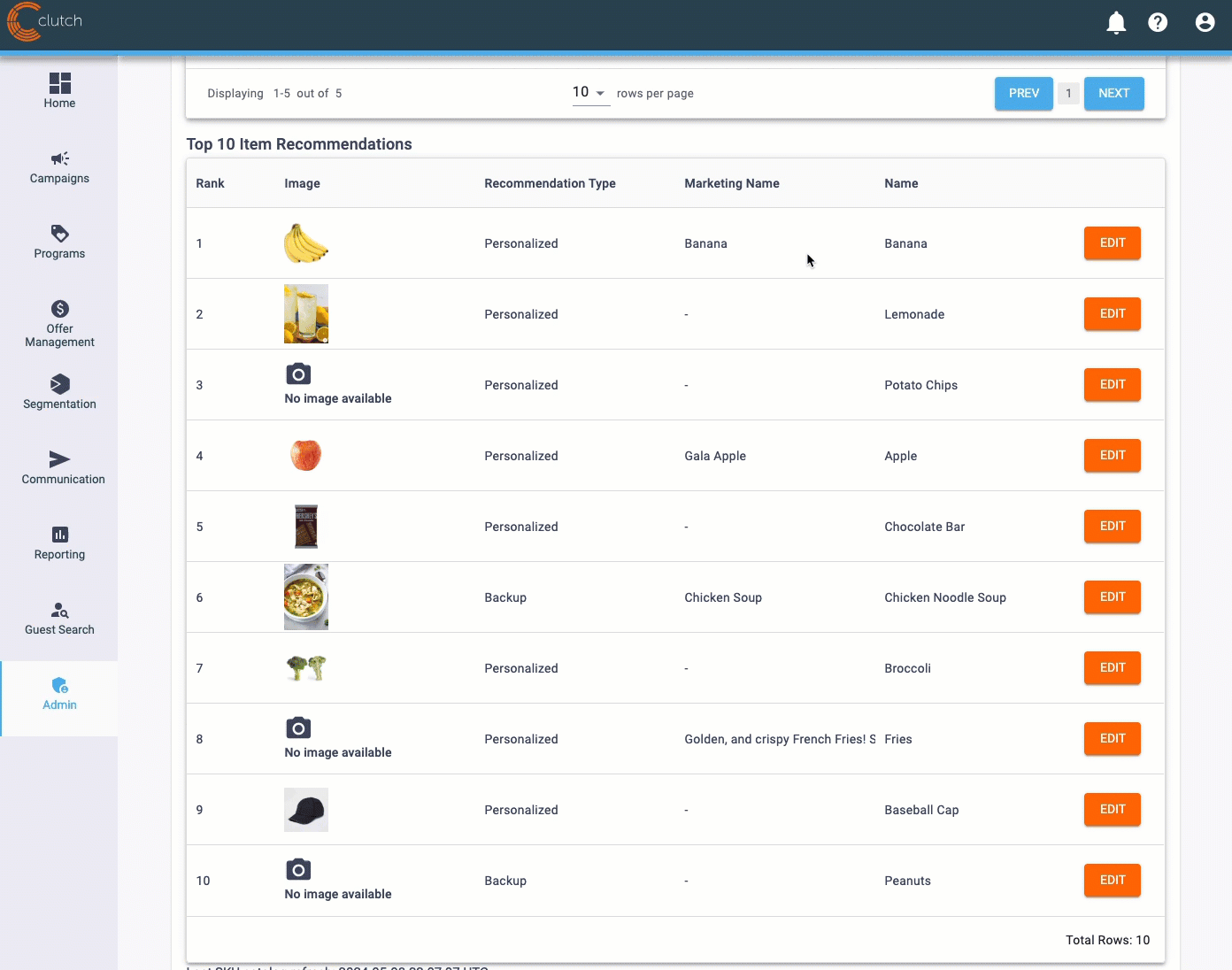RecommendAI utilizes purchase data to identify items frequently purchased together, making it ideal for identifying specific audiences for targeted promotions, new item launches, and creating combination offers and effective item placement strategies. It is a fully managed machine learning service that goes beyond rigid static rule-based recommendation systems and trains, tunes, and deploys custom ML models. This model is refreshed weekly.
Simply put, this tool determines product recommendations for customers. To help you understand how out product recommendations tool works, we’ve provided transparent access to this tool! Once you’re comfortable and you see how it recommends items to customers, we encourage you to start utilizing Clutch’s Product Recommendation option when creating an email.
You’ll see the RecommendAI tile within the Admin section if your brand has access to product recommendations and your user has admin permissions.
Using Recommend AI
You can use RecommendAI to show recommendations based on Items, Segments, and Individual guests.
Note that the top 30 items will be generated for individual guests, and 10 of these items will be displayed to you in this table. Different items may appear if you generate recommendations more than once for a user. Note that in product recommendation emails, 3 items are picked to be displayed in the email.
Recommendations Based on Items
This allows you to select specific items from your marketing catalog to identify other items that are frequently bought together. For example, if you select an apple, it will generate a list of items that are frequently purchased with apples.
This can be a great way to come up with marketing promotions! For example, if you see that bananas are often purchased with apples, you could set up a promotion where if folks buy 2 lbs of apples, they get 50% off their purchase of bananas to encourage that purchase further.
Recommendations Based on a Segment
This allows you to select a segment and display what items are frequently purchased within that segment.
For example, you may look at your Top Customers segment for Active Customers and see that they are recommended pizza. With that information, you may want to design an offer related to discounts on pizza or items that pair well with pizza.
Note that for this option, 10 members of a segment are analyzed, and recommendations are pulled from these. If you’re looking at a large segment, you may want to generate these recommendations several times to check a large sample size for a common theme!
Recommendations Based on an Individual Guest
This allows you to select a specific guest for whom you want to identify recommended items. To search for your guest, click the Generate Recommendations button in the row with their name or other identifying information to see what recommendations they may be provided.
Once you generated the recommendations, scroll below the guest selection table to view them.
Personalized vs Backup Recommendations
Personalized recommendations are items our algorithm has determined your customers will have a higher chance of purchasing compared to other items you may have available. When a customer doesn’t have enough personalized recommendations, we display backup recommendations.
Backup recommendations are the most popular recommendations and are given when a customer doesn’t have enough personalized recommendations. This can be due to a lack of purchases or if they have too many recommendations for excluded products.
Recommend AI and the Marketing SKU Catalog
The Marketing SKU Catalog is automatically linked to the RecommendAI tool. If you’re perusing product recommendations in the RecommendAI tool, you may notice missing SKU data points if items were not completely documented in the catalog. You can make edits from here that will also be reflected in the Marketing SKU Catalog.
